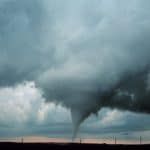The message from Strasbourg
By Alexander Kelle | February 23, 2012
On December 20, 2011, the European Court of Human Rights in Strasbourg, France, ruled that the “use of gas against terrorists during the Moscow theatre siege was justified.” It did not, that is, violate the right to life — enshrined in Article 2 of the European Convention on Human Rights — of the 700-plus hostages in a Moscow theater almost a decade ago.
In the early morning hours of October 26, 2002, Russian authorities pumped a “gas,” the exact composition of which is still unknown, into the Dubrovka Theater Center in Moscow in order to end a hostage crisis in which around 40 Chechen terrorists held more than 900 people hostage for over two days. As a result, in addition to most of the terrorists, 125 hostages died either during or shortly after the storming of the theater. Chaotic scenes outside the venue showed unconscious hostages being piled upon each other exposed to the rain and snow. Meanwhile, the Russian authorities refused to reveal the chemical agent used in the operation, which led to severe criticism at the time. A domestic investigation in 2003 concluded that the hostages died of “natural” causes and that the gas had at best an indirect effect.
Having exhausted all domestic juridical options, some 60 hostages who survived or relatives of the ones who died in the operation brought the case before the European Court of Human Rights. The court, in March 2010, declared as admissible the “complaints under Articles 2 and 3 about the use of force by the authorities, and the planning and conduct of the rescue operation of 26 October 2002.” But the judgement of December 20, 2011, concluded that the hostages’ right to life was not violated by the Russian authorities’ decision to “resolve the hostage crisis by force and use of gas,” but that a violation of Article 2 of the European Convention on Human Rights had occurred: a) the “inadequate planning and implementation of the rescue operation” and b) the “ineffectiveness of the investigation into the allegations of the authorities’ negligence in planning and carrying out the rescue operation as well as the lack of medical assistance to hostages.” This verdict and the reasoning behind it raise a number of problematic issues:
- One key element of the European Court of Human Rights’ finding — that the hostages’ human right to life was not violated by the use of gas — relies on the court’s somewhat surprising interpretation of the concept of “indiscriminate use of force.” Here, the court argues, in paragraph 232 of the decision, “Although the gas in the present case was used against a group consisting of hostages and hostage-takers, and although the gas was dangerous and even potentially lethal, it was not used ‘indiscriminately’ as it left the hostages a high chance of survival.” Apart from the fact that the use of a toxic chemical by Russian special forces clearly did not leave any chance of survival to 125 of the hostages, such an effects-based understanding of indiscriminate use of force seems strangely at odds with the established principles of the law of armed conflict. It is somewhat peculiar that the court seems to regard indiscriminate use of force against domestic attacks as being limited to the use of “heavy weapons in anti-terrorist operations” or the shooting down of hijacked aircraft — the underlying logic being that the civilians in such scenarios would not have a chance to escape. And yet, compared to these scenarios, it remains unclear how the theater hostages would have had any greater chance of escape. As the court itself acknowledges, the gas had a delayed effect on the hostage-takers. As a result, according to witness accounts, the hostage-takers would have been able to detonate their bombs had they decided to do so.
- A second problem is related to the distinction made by the court between lethal or non-lethal use of force and the role of intent. The court creates this distinction based on the UN’s Basic Principles on the Use of Force and Firearms by Law Enforcement Officials. But what is noteworthy is the fact that only these UN basic principles were identified by the human rights court as relevant international law — but not the Chemical Weapons Convention (CWC). This is puzzling, as the primary weapon employed in the assault by Russian special forces clearly was a toxic chemical; firearms were only used subsequently to shoot the hostage-takers. Without being able to conclusively determine either the Russian intentions or the exact nature of the toxic chemical used, the court assumed that the “gas was probably not intended to kill the terrorists or hostages. It was therefore closer to ‘non-lethal incapacitating weapons’ than to firearms.” And yet, in paragraph 202 of the decision, the court found it “safe to conclude that the gas” — a supposedly non-lethal incapacitating weapon — “remained a primary cause of death of a large number of the victims.”
Not surprisingly, the court had difficulties reconciling this tension between assumed intention and de facto effects of the toxic chemical on a substantial number of the hostages. As Lynn Klotz, Martin Furmanski, and Mark Wheelis have shown in their paper, “Beware the Siren’s Song: Why ‘Non-Lethal’ Incapacitating Chemical Agents are Lethal,” this is to be expected given the inherent difficulties with the current state of science to produce an incapacitating chemical agent that is truly non-lethal. This is compounded by the practical difficulties of dosage control under field conditions: 1) People respond differently to the same dosage of an analgesic or anaesthetic drug (what incapacitates one person can kill the next); and 2) It is practically impossible to control dosage in an environment like the theater (exposure to more or less gas could depend on how close a hostage was to a vent). This is precisely why, in Article II of its Convention, the CWC makes no distinction between lethal and non-lethal chemical weapons, but rather focuses on the toxic properties of a chemical, “which through its chemical action on life processes can cause death, temporary incapacitation or permanent harm to humans.” Furthermore, also under the CWC’s Article II, all toxic chemicals are treated as chemical weapons, “except where intended for purposes not prohibited.” The use of riot-control agents, when not employed as a means of warfare, constitutes such an exemption, as does the use of toxic chemicals for law enforcement according to Article II 9.d of the CWC. Yet, what exactly constitutes “law enforcement” is left undefined in the Chemical Weapons Convention, as are the “types and quantities” that are deemed consistent with such use. These legal indeterminacies have caused extended debates among proponents and opponents of incapacitating chemical agents over the past decade.
Thus, the point here is not to argue that consideration of the stipulations of the Chemical Weapons Convention by the court would have produced much guidance or resulted in a more human rights-friendly judgment. Rather, in addition to green-lighting the state practice of Russian authorities using toxic chemicals, the judgment can be regarded by proponents of incapacitating chemical agents to lift what legal scholar David P. Fiddler has called the “fog of fentanyl” in their favor. In the absence of CWC clarity, the court’s judgment now risks making the mountain that opponents of incapacitating chemical agents for law enforcement have to climb steeper than previously assumed. Hence, a potential and somewhat worrying take-away message of the European Court of Human Rights’ judgment is that the use of toxic chemicals for law enforcement is fine, as long as precautions are taken to limit the damage to innocent bystanders and as long as the situation is comparably severe to the one in Moscow. In this sense, the ruling is quite unhelpful for strengthening the right to life against toxic chemicals and unhelpful for those who seek to avoid having the Chemical Weapons Convention undermined — especially in the run-up to the 2013 CWC Review Conference.
Together, we make the world safer.
The Bulletin elevates expert voices above the noise. But as an independent nonprofit organization, our operations depend on the support of readers like you. Help us continue to deliver quality journalism that holds leaders accountable. Your support of our work at any level is important. In return, we promise our coverage will be understandable, influential, vigilant, solution-oriented, and fair-minded. Together we can make a difference.
Topics: Columnists















